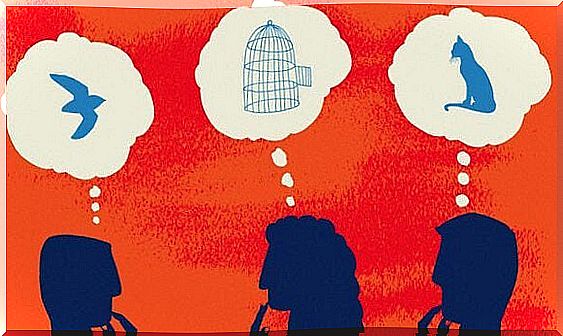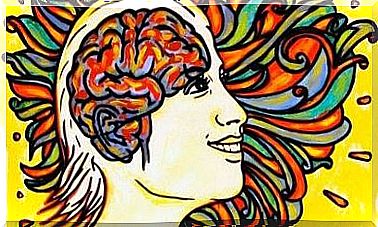Mentalization: The System That Forms The Basis Of Empathy

Mentalization is the ability to know the difference between your own mind and that of others. It allows you to anticipate the behavior of others through the mental state you attribute to them. A mental state can include thoughts, feelings, beliefs, desires and so on.
Think of the following example, imagine you are looking out the window and watching your neighbors walk out of their house. Once they are a few steps away from the door, they start patting their pockets, turning around and walking in again. You probably won’t have any trouble understanding their behavior – they obviously forgot something. This is because you are able to perceive their thoughts and interpret their behavior. In psychology, this ability is included under the concept known as mentalization.
Mentalization – a conceptual system
Mentalization stems from the teachings of constructivism, which see people as scientists who create intuitive theories based on concepts. Therefore, mentalization starts on the basis that all perceptions and perceptions around the mind form a giant conceptual system. A conceptual system is something that is defined by a network of related concepts rather than an explicit definition.

There are two basic points to understand around this conceptual system:
- Interpretation – we use concepts to represent mental states and construct a reality around this information.
- Logical inferences – the logical relationship between concepts allows us to explain and predict future behavior using cause and effect.
We can therefore define mentalization as a cognitive system that handles, interprets, and predicts behavior using conceptual systems and logical inferences. This definition suggests that the mind is an intermediary between perception and action. If you can imagine the thoughts of others with your own thoughts, you can decode their behavior.
The mind acts as a mediator of behavior
But from this arises the question, how does the mind act as a mediator between perception and action, and how can we deduce what is going on in other people’s thoughts? It is important to answer these questions to understand how we are able to predict other people’s behaviors, just by intuitively knowing their thoughts. Psychologist Riviére and his team developed a causal theory to explain it.
According to Riviére et al, it all begins with the perception through which we shape our beliefs about reality. When combined with our educational and biological background, this creates desires, which in turn changes our intentions to promote their fulfillment. D ette interaction between beliefs and desires can trigger a variety of behaviors that strives to fulfill these wishes.
The limitation of this model is that it is far too simple to explain the reality of behavior. But you do not really need to see it from a scientific perspective. For we look at how the brain uses its reason, not what actually happens. It seems that this is the theory that the brain uses when interpreting and predicting its own and others’ behavior. It may be lacking in accuracy, which means that it fails from time to time, but it is a quick detour that is most accurate.

How does mentalization develop?
We are not born with a mentalizing ability, but we are born with a potential for it. It comes already installed in the brain. But it needs the right stimulation during the crucial development periods to be able to be fully functional.
The age at which mentalizing ability usually develops is the age of 4-5 years when children begin to solve tasks of false belief. It does not develop before this time, because the child must first develop the ability to understand two basic concepts:
- Desires and beliefs – the child must understand that a person’s behavior is governed by their own desires and beliefs. The child must learn that beliefs can be wrong and do not always want to be fulfilled.
- Humans perceive objective reality from a subjective reality – the child needs to understand that behavior is governed by a subjective assessment of reality. And then the child will be able to understand the existence of false beliefs, and get something sensible out of them.
Even when the mentalizing ability is fully developed, it does not remain a passive process. It is an ability that influences the development of other important abilities, including empathy. As children begin to understand other people’s beliefs and desires, they may begin to put themselves in the place of others.









